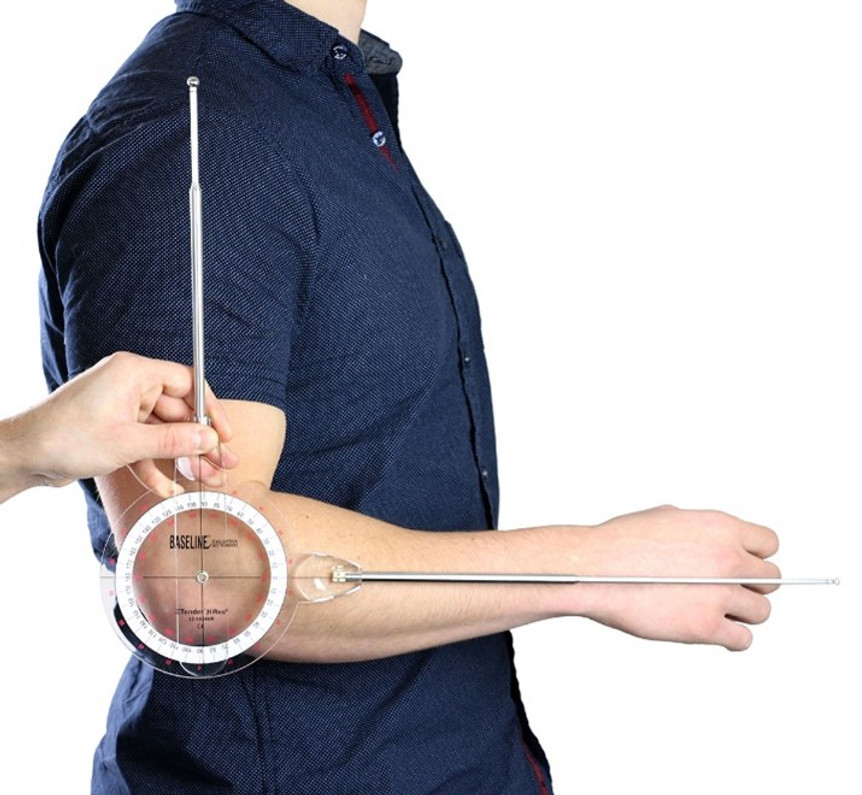Measuring Range of Motion Using Goniometers
Accurately assessing the range of motion (ROM) of patients is crucial for physical therapists to make informed clinical decisions and develop effective treatment plans. However, challenges often arise in pinpointing specific anatomical landmarks necessary for precise goniometric measurements. This can lead to inaccuracies in determining the stationary arm, movement arm, and axis, hindering the reliability of the assessment.
To overcome these challenges, physical therapists can utilize specialized tools like goniometers equipped with innovative features to enhance accuracy. One such tool is the Baseline Plastic Absolute+Axis Goniometer – 360 Degree Head – 12-inch Arms. This goniometer incorporates an integrated Absolute+Axis® at the end of one arm, establishing a true vertical or horizontal reference point for measurements. By eliminating the need for approximation or visual estimation of alignment, this feature minimizes measurement variability and allows practitioners to focus on correctly positioning the goniometer arms and the patient's body.
The Absolute+Axis® goniometer facilitates precise measurements across various joints, including shoulder and hip rotation (internal, external), cervical flexion, extension, rotation, and side bending, as well as hamstring flexibility and active ROM. This capability enhances the reliability of assessments, enabling therapists to tailor treatment plans more effectively to individual patient needs.
Another valuable tool for accurate ROM measurement is the Baseline® XTender® Hi-Res® 360° ISOM Goniometer. This goniometer is designed to measure the axis and ROM of both large and small joints with exceptional precision. Featuring a 360-degree head with three easy-to-read scales, including a primary scale with 1° increments, it allows therapists to capture subtle changes in joint movement accurately.
Moreover, the stainless-steel arms of the XTender® goniometer are extendable from 12.5 inches to 33 inches, accommodating measurements for larger joints or a broader range of motion. This flexibility makes it suitable for diverse patient populations and clinical scenarios, ensuring reliable and consistent ROM assessments across various anatomical regions.
Incorporating these advanced goniometric tools into clinical practice empowers physical therapists to obtain precise and repeatable ROM measurements, facilitating more accurate assessment of patient progress and the formulation of tailored treatment interventions.
Recent Posts
-
How Occupational and Hand Therapists Perform Initial Hand Function Evaluations
When a patient begins hand therapy—whether recovering from an injury, surgery, or neurolo …Apr 6th 2025 -
What to Expect During Hand Therapy: A Guide for Patients and Caregivers
If you’re starting hand therapy—whether after surgery, a stroke, or a neurological …Apr 6th 2025 -
Improve Hand Function and Dexterity with the Neofect Smart Pegboard
The Neofect Smart Pegboard is a revolutionary tool in the field of occupational therapy. I …Mar 25th 2025



